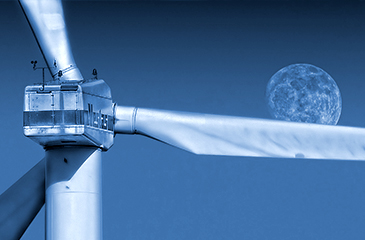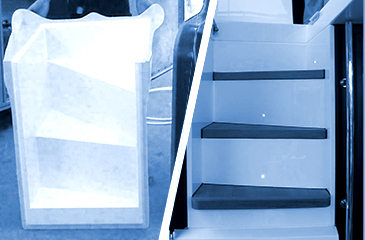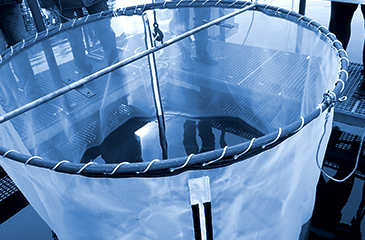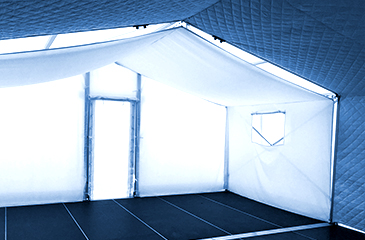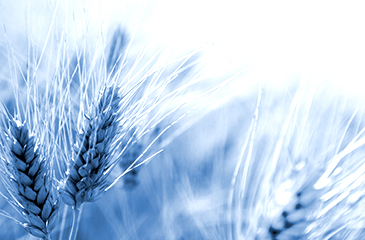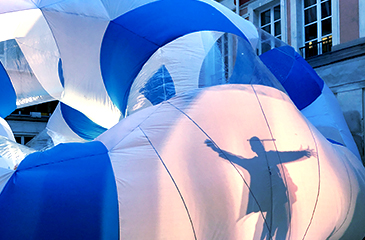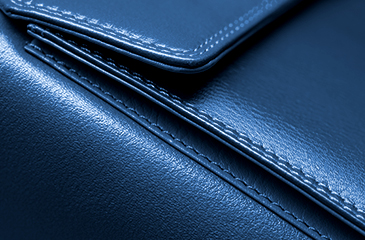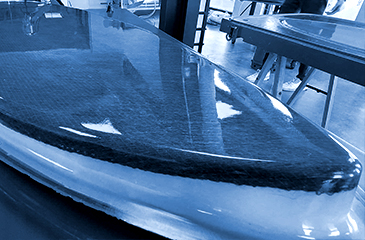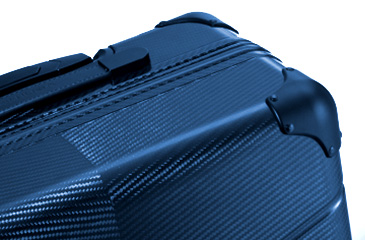
Simplified method of covering/marouflage
1. Sand and remove all grease (impurities) on the surfaces to be covered or to be treated by marouflage.
2. Apply 2 or 3 layers of neat Solo coating with a brush, until the layers is thick enough to give a shiny or varnished appearance to the wood. Allow an interval of 1 hour between 2 layers. The time for final drying is about one hour.
3. When the coating is dry, position the DIATEX fabric on the surface to be covered and clip it or pin it on its sides.
4. Dab through the fabric on the parts of the DIATEX fabric on a wood substrate. Use a brush soaked in a mixture of Solo coating heavily diluted with Solvent for Solo (50%), (if necessary, you can reposition the fabric at this stage). Apply generously so that the coating penetrates through the fabric. This reactivates the coating previously deposited on the wood. Do not paste fabric with creases; neither heat not the coatings will eliminate them.
5. Repeat this a second time (but with 25-30% of solvent for the Solo). Then wait until everything is dry.
6. Remove the clips or needles. Paste the parts overlapping at the sides with Solo coating (with a maximum of 20% of Solvent for Solo). Cut off part of the fabric if the overlap is too great. Wait for everything to dry.
7. Heat-shrink and tension the canvas with our Digital coating iron. Pass briefly over the whole area and then return to the parts with less tension or with creases. Raise the temperature of the iron little by little, between each pass. You can check it with our covering thermometer. Stop the shrinkage as soon as the fabric appears well tensioned.
Never apply more than 180° on the fabric
CAUTION :
Pass over the upper surface and then on the underside: then raise the temperature and start again.
Never stay too long on a single face because the shrinkage force of the fabric could distort the wing or other parts.
8. Then apply a first coat of Solo coating (with a maximum 10% of Solvent for Solo), over the whole area covered with fabric. Application with a flat brush or roller (no spray guns).
9. Insert drainage holes and if necessary create inspection orifices by bonding reinforcement rings for the future inspection plates.
10. Then apply a second coat of Solo coating (with a maximum 10% of solvent for Solo). Allow 1 hour before the next coat.
11. Then apply a third coat of Solo (with maximum 10% of solvent for Solo). The final drying time is 2 to 3 hours.
12. Once dry, sand the whole of the surface with 80 to 240 grain glass paper.
13. Superficially rub the whole of the area with solvent for Solo to remove all impurities and obtain a good surface condition.
14. Then apply the primer and paint system according to our technical documentation.
| N.B. The use of primer and paint system other than those recommended by us can cause the following problems : |
The coating settings are given for a hygrometry of 21/23°C and 50/60%. |
|
|
|
|
| The number of layers of adhesive and coating is given based DIATEX 2000 fabric. They will be reduced for DIATEX 1500 and 1000. |
IMPORTANT !
One aeronautical paint can cover up to twice as much surface area than another, because of much lower dry extract and for a significantly lower final weight.
The information provided in this document is for information only and free of charge, within the scope of our technical assistance. It does not engage our responsibility in any circumstances.
Documentation
Simplified method of covering/marouflage (2 mo)


